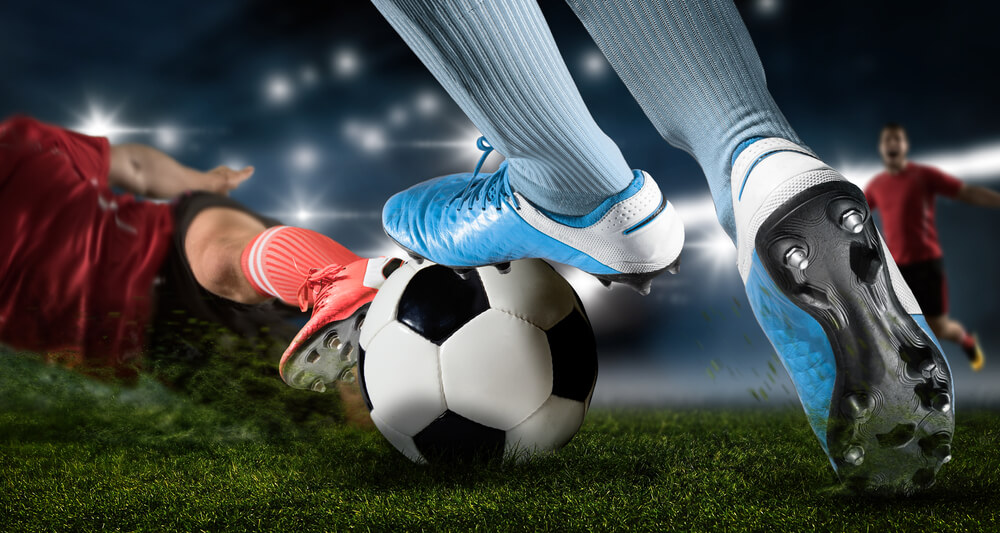Materials Used for soccer ball
The bladder and the shell/casing are the two elements of a typical soccer ball.
- Bladder is the ball’s interior compartment that stores the air,
- Shell/ casing protects the ball’s outside surface as well as its panels.
Panels
The panels are the octagon quilts that are commonly found on the outside of soccer balls. Did you know that the official FIFA soccer balls contain 32 panels, whereas others have 18-26 panels.
Casings
Polyurethane (PU) and PolyVinyl Carbonate (PVC), synthetic leather, and a mix of PU and PVC are the most often used materials for the casing. By feeling the case, you can tell which type it is. PVC balls are often rough on the outside yet are inexpensive and long-lasting. PVC balls are more responsive, yet PU-cased balls are gentler to the touch. Further, synthetic leather balls provide higher controllability, making them suited for professional matches or high-level play. In addition, all soccer balls have a glossy appearance. This helps to keep the balls from getting scuffed and wet.
Bladder
The bladder is in charge of keeping the air in place. Butyl or latex materials can be used to make these. However, as latex is softer, it is preferred by experts. Butyl bladders, on the other hand, don’t need to be refilled as often since they hold more air.
Size
Soccer balls are available in a wide range of sizes for a purpose. There are five sizes to choose from, and the best fit is determined by the player’s age. This is also determined by the league, therefore it’s a good idea to double-check with the coach before making a purchase.
Size 1
A skill or tiny ball, with a circumference of 18-20 inches, is what players refer to as a small ball. These sizes are used for both recreational and athletic purposes.
Size 2
For matches and ball control training, they are the perfect size for kids under the age of four.
Size 3
These are certified soccer balls for children under the age of 8 years old, despite their diminutive size. It is also known as a junior ball and has a circumference of 23-24 inches and weighs 11 to 12 ounces.
Is your youngster between the ages of 6 and 8 in need of a ball? This shopping guide for soccer balls in size 3 may be found here.
Size 4
For official matches involving youngsters aged 8 to 12, players utilize size 4 soccer balls. A young ball is another term for it. These balls are 25-26 inches in diameter and 12-13 ounces in weight.
Size 5
This adult soccer ball is 27-28 inches in diameter, weighs 14-15 ounces, and is suitable for players aged 13 and above. The biggest official ball is of this sort.
Do you have a broad foot and are unable to locate soccer cleats that fit properly? You’ve come to the right place if you’re looking for information about wide soccer cleats.
Budget
Your search for a soccer ball may be influenced by the price you are prepared to pay. The cost of these items varies based on their nature, manufacture, quality, and other characteristics. If you want to kick a ball around for pleasure or give it to a youngster as a toy, go for a cheap ball because key characteristics e.g., speed and level of control is overlooked. This is especially true for youngsters in leagues since they will quickly outgrow the ball, necessitating the purchase of a larger, slightly more expensive soccer ball.
If you are ready to spend a lot of money on a ball, it is a good idea to conduct some research first. A soccer ball’s price does not guarantee that it is the best on the market.
Bonus Points
Examine the Balls
Giving the ball a few dribbles and kicks might sometimes assist you in figuring out if it’s the best option. Also, the alignment of the ball can become clear to ensure the ball is high quality.
The Visual Examination
A cursory examination of the ball’s structure may assist you in making an informed selection. The ball’s panel is the first item you should examine. Sewn-together soccer balls are preferable to glued-together ones. Premium balls have hand-stitched panels, whilst lower-quality balls have machine-stitched panels.
Figure out how many panels there are.
Did you know the number of panels on the ball impacts the performance?! How many panels should you get?
Following on from this know how many panels to get, you need to know that: more panels indicate better control of the ball whereas fewer panels represent increased speed. This means you need to decide what matters to you more and what situation is the soccer ball for.
Try it out for Size
Some soccer balls are overly rough and hefty. In this situation, select one that is least likely to damage players when kicked, head-butted, or caught.

